Radical Departures
How the shifting views of Tilak, Iqbal, Jinnah and Savarkar changed national destiny
 TCA Raghavan
TCA Raghavan
 TCA Raghavan
TCA Raghavan
 |
09 Aug, 2024
|
09 Aug, 2024
/wp-content/uploads/2024/08/RadicalDeparture.jpg)
LATE IN THE WINTER OF 1976 OR IN early 1977 something unusual happened at Jawaharlal Nehru University (JNU) in New Delhi. The British historian EP Thompson was delivering a series of lectures, two or three if I recollect correctly, at the university.
Historians routinely give lectures at universities, but EP Thompson (1924-93) was a big name—and for many reasons. Among historians and history students, as I then was, he was easily amongst the greatest living social historians, certainly in the Anglo-Saxon and the English-speaking world. His The Making of the English Working Class (1963) was a classic of its time. Another great historian, EJ Hobsbawm, would later describe it as “almost certainly the most influential single book of history in the Anglo-Saxon radical Sixties and Seventies.” Hobsbawm said that Thompson was in the 1980s “the most widely cited 20th-century historian in the world”. Even in India, the ‘history from below’ revolution that followed from the 1980s and altered the scope of Indian history-writing and gave it a global presence, owed much to Thompson and perhaps at least some of its future protagonists were in the JNU lecture theatre where he spoke.
Thompson was however important for other reasons: he was a dissident within the leftist and Marxist universe. For this reason, too, students of the radical JNU flocked to hear him. He was a formidable critic of the establishment left which obviously included the communist parties. This was the Emergency period in India and the Communist Party of India (CPI) was in concert with the ruling Congress. Many JNU student activists were in jail. All this formed the context in which Thompson spoke —although I do not think he commented on what was happening in India until after he left the country.
Finally, Thompson was not just another British historian visiting India. His father, Edward Thompson, had been a well-known figure in India in the 1920s and 1930s and, in his own way, was close to both Jawaharlal Nehru and Mahatma Gandhi. For anyone familiar with the Indian national movement the elder Thompson stood out as one of those British intellectuals deeply sympathetic to India and supportive of its interests.
Alongside these reasons making EP Thompson a sought-after, if slightly exotic and eccentric, figure at the time, there was the fact that he was outstanding in front of a blackboard with an audience hanging on every word and every gesture. He was theatrical, had a well-modulated voice and a sharp sense of humour and all these attributes shone when in one of his lectures he took on the French Marxist philosopher Louis Althusser—then one of the ruling deities of the French and European left and certainly the most talked about political philosopher of the time.
Thompson’s critique amounted to attributing to Althusser’s philosophical interventions and explanations virtually all that was wrong with Marxism and Marxist movements, beginning with Stalinism to the absence of democratic thinking and sticking to formulaic ideas. In many ways it was more polemic than analysis, but it was brilliant. Most of it was unintelligible to me but the fact that he spoke for about an hour, followed by very detailed questions and comments from at least a few in the audience, piqued my curiosity.
I thereafter tried to find out more about Althusser and even read him. The sheer denseness of his prose and the opacity of his arguments and my total unfamiliarity with the basic philosophical ideas and concepts he was talking about, made this an impossible task. A phrase Thompson had used and then with great delight had written out on the blackboard, often came back to me at this time— Geschichtenscheissenschlopff or ‘All this shit’, a term often privately used by Marx himself. This of course had even the solemn and serious JNU audience in splits and Thompson’s point was that Marxist structuralism—Althusser in brief—“was up to its chin” in it.
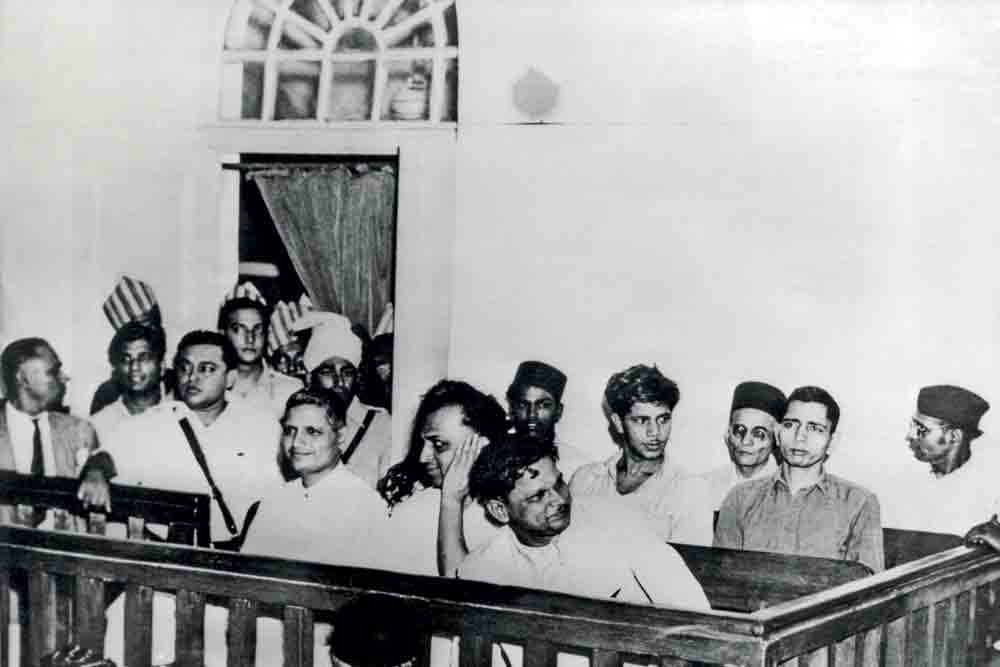
There is the view that Savarkar suffered a great deal in jail at the hands of Muslim jailers and this experience permanently embittered him. Whatever the reason, it does appear that Savarkar’s thought underwent a fundamental realignment in the second decade of the 20th century
Thompson was as consummate a performer as he was an accomplished historian, and to me confronted by Althusser’s unintelligible prose and the obscurity of his arguments, this takedown appeared even more convincing. I more or less consigned the whole of Althusser to the dustbin permanently. Such are the certainties of youth and sometimes a little half-knowledge is intoxicating.
YET SOMETHING ALTHUSSER WROTE HAS stayed with me—at least in a simplified and elementary, even distorted—sense. Karl Marx’s evolution, Althusser had argued, can be seen as comprising two periods radically separated by what he termed as being an “epistemological break”. This occurred, according to Althusser, in 1845 and there is a fundamental break between the young pre-1845 Marx and the older post-1845 Marx. Reduced to its bare essentials, the argument is that Marxist philosophy with dialectical materialism at its core emerges only after 1845 and his work before had an entirely different character: the younger Marx was ‘Hegelian’ and it was only after the ‘break’ did Marx qua Marx emerge.
The questions of continuity between the younger and the older Marx, or the philosophical issues inherent in this concept, did not concern me unduly. With time, the global change heralded by the break-up of the Soviet Union and the general disillusionment with Marxism meant these questions were themselves dated. The idea that did, however, remain was the very simple one: no one is ever fully formed, often people can change and change radically, and the new is not just surprisingly different but could not have been anticipated or predicted by looking at the precedents or the existing trajectory of that person’s mental makeup.
In this context, four principal figures of the first half of the 20th century in India stand out for the dramatic change in their political life and thought. These four individuals are—in the order of birth—‘Lokmanya’ (Bal Gangadhar) Tilak (1856-1920); ‘Qaid–e-Azam’ (Muhammad Ali) Jinnah (1876-1948); ‘Allama’ (Muhammad) Iqbal (1877-1938); and ‘Veer’ (Vinayak Damodar) Savarkar (1883-1966).
Each of these honorifics and titles—Veer, Lokmanya, Qaid, and Allama—has become synonymous with their names which were originally bestowed largely spontaneously by an admiring public. These honorifics suggest the extent to which they were public personalities and the transformations that took place in their political thought were public events and not quiet, personal changes. We could briefly look at each of these ruptures beginning with the youngest.
VEER SAVARKAR
When Savarkar died in 1966, few could have anticipated the trajectory of his afterlife. In every decade since, and especially from the 1990s, his profile has further consolidated and risen. But at the time of his death the taint of being part of the conspiracy that led to the assassination of the Mahatma two decades earlier, was strong. Savarkar was jailed and although finally exonerated, the reputational damage he suffered was immense and he would live the rest of his life largely in seclusion, shunned by the mainstream politics of the country. The veteran Congressman Asaf Ali had then wryly noted: “How the wheel of destiny has turned in the opposite direction today.” He was referring to the adulation that had surrounded Savarkar in the first decade of the century as the author of The Indian War of Independence: 1857, secretly published in 1909 in Europe and banned in India almost immediately as seditious. Asaf Ali had known Savarkar as a student in London and had been one of those deeply impressed by the book. This book, along with Savarkar’s arrest in Britain, an attempted daring escape that ended in failure, conviction for two full life-terms, transportation to the Andamans and a period of 12-13 years in prison, all contributed to Savarkar’s profile in the 1920s even when he was out of the public gaze and in prison.
Released from prison conditionally in 1924 and permitted to live in Ratnagiri, Savarkar became from the mid-1920s a powerful and inspiring voice urging Hindu consolidation and Muslim exclusion. His books Hindutva or Who is a Hindu (1923) and Hindu Pad-Padshahi (1925) quickly became standard texts for many, and have remained so. In these, the fundamental premise of his critique was that Muslims (and Christians) had no fundamental loyalty to India because their faiths did not originate here. Muslims are depicted as untrustworthy, intrinsically cruel, greedy, and prone to violence. Through his journalistic writings as also a host of other genres, including poetry, plays and essays, this basic mould was developed. A recent biographer, Janaki Bakhle, has therefore emphasised: “Savarkar was not sporadically or episodically anti-Muslim; he was deeply and systematically anti-Muslim”.
In this context, Savarkar’s first book on the events of 1857, which did so much to cement his early reputation as a freedom fighter, stands out in contrast.
The most striking feature of this book is that Muslims are not depicted as enemies nor possessing the negative attributes that made his later writings distinctive. The title indicates that the author saw it as an Indian rather than a Hindu or a Muslim war of independence, and this feature is maintained consistently throughout. Also, the war was as much to protect religion as to gain independence. Interestingly, Savarkar does not regard these two aims as either contradictory or exclusive. Savarkar also projected swadharma and swaraj as important to both Hindus and Muslims. ”The sepoys would take the water of the Ganges or would swear by the Koran that they would live only to achieve the destruction of the English rule.” Savarkar was not suggesting a picture of a pre-British golden age. He saw in the past both conflict and insecurity—yet to him it was still swaraj. Later, he would characterise the pre-British age as one of Muslim tyranny and Hindu resistance. Yet in 1909, he described those apprehensive of restoring the state of affairs which had existed prior to the British as sinners, “idle, effeminate, selfish and treacherous”.
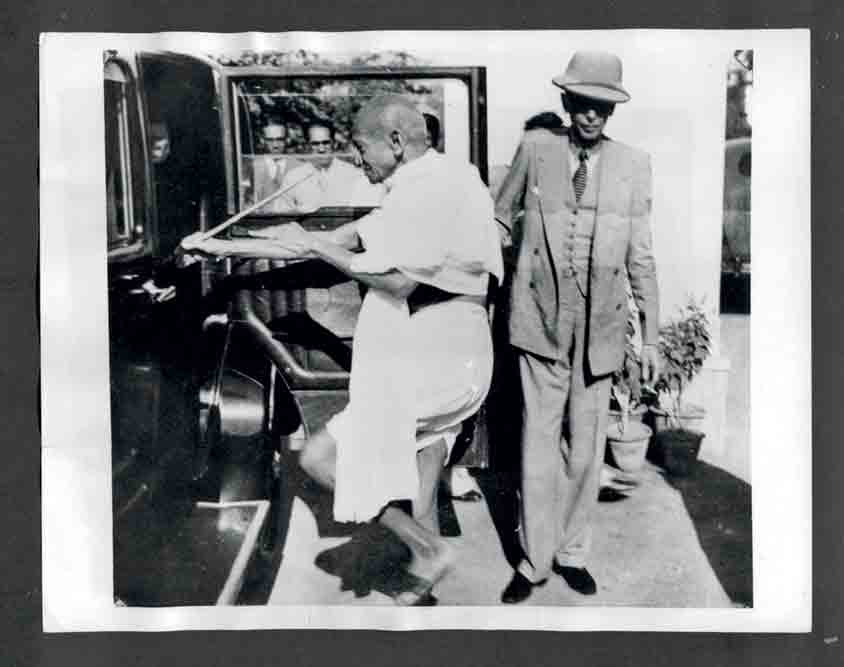
The path for Jinnah would become that of the most prominent face of Muslim separatism. Some trace this to the Nagpur session of the Congress, in many ways also the point when a shift took place in Indian political culture with the Gandhian tactics of non-cooperation
How do we integrate the body of this work with the later Savarkar? In some accounts this book is an exception and Savarkar’s anti-Muslim prejudices had been with him from childhood. The evidence for this, including from Savarkar himself, is however from a much later period when the effort may well have been to show a basic continuity and consistency in his thinking. There is, however, also the view that Savarkar suffered a great deal in jail at the hands of Muslim jailers and this experience permanently embittered him. Whatever the reason, it does appear that Savarkar’s thought underwent a fundamental realignment in the second decade of the 20th century.
ALLAMA IQBAL
Muhammad Iqbal, Pakistan’s national poet, has a split personality for most in India. His poem Sare Jahan se Achha remains a national flag-bearer and would easily be ranked amongst India’s best-known and most loved poems, alongside Rabindranath Tagore’s Jana Gana Mana and Bankim Chandra’s Bande Matram. And yet, another greatly loved poem of Iqbal, Lab Pe Aati Hain Duan Ban Ke Tamanna Teri, led to a major controversy a few years ago when it was alleged that this was a religious prayer not to be sung in schools and even that it was ‘anti-national’.
Why this should be so was never clarified but the subtext had clearly to do with Iqbal’s dual legacy. To many, he is one of the early progenitors of the two-nation theory and someone who bestowed legitimacy on the idea because of his high reputation as the greatest and most cerebral Urdu poet of his time. In the 1930 session of the Muslim League, he had spoken of a consolidated Muslim state in the Northwest of India—comprising Punjab, Sindh, NWFP, and Baluchistan—as being “the final destiny of the Muslim, at least of NW India”.
This wasnot Pakistan, asit waslaterto be articulated, for Iqbalhad also spoken of “a Muslim India within India”. Yet, notwithstanding theambiguitiesin the1930 speech—did he mean a Muslim majority state in a confederated India or a sovereign Muslim state?—Iqbal was enshrined as the national poet of Pakistan and ranks in popular perception with Jinnah as one of its founding fathers.
This would not appear unusual given the drift of his poetry over the preceding two decades, with a strong pan-Islamic thrust evoking a sense of Muslim supremacy and superiority. There is alongside a deep negativism and despondency about the current state of Islam and status of Muslims. Such evocation of past greatness and frustration with current decline were hardly unique to Iqbal. Nor was the theme that Muslims should unite, recognising their fundamental oneness and separate destiny. Similarly, his critique of the West for its materialism and greed was not an unfamiliar trope. Such views were widely prevalent amongst a range of Muslim intellectuals.
What was striking about Iqbal was not that he was articulating such sentiments but the power and elegance with which these ideas were expressed in his poetry. In this genre was his famous Shikwa—it was first recited in 1909 in Lahore and quickly became a classic. In substance, Shikwa is a complaint to God for his unfairness to Muslims and their consequential loss of power and status. Khushwant Singh, an admirer of Iqbal’s poetry, had commented: “Shikwa may be regarded as the first manifesto of the two-nation theory which was later elaborated in detail by Chaudhury Rahmat Ali and accepted as the basis of the foundation of a separate state for the Muslims”.
Shikwa and Iqbal’s later poetry stands out for its contrast with his earlier poetry and in particular with Sare Jahan se Achha or the Tarana e Hindi. In this genre were other poems in which there is a celebration and invocation of a synthetic and composite India. In this category fall Himala, Naya Shivala, Hindustani Bachon Ka Quami Geet, etc. The scholar Ravi Mishra has written that “Himala is a celebration of the sacred geography of India” and Naya Shivala “reveals his commitment to Indian nationalism and a composite culture.”
That there was a clear difference between these and his later poems was perhaps recognised by Iqbal himself. The later Tarana-e-Milli (Song of the Nation of Islam), is often considered a counter to the Tarana-e-Hindi (Sare Jahan se Achha). That the two poems have the same rhyme and metre certainly makes it appear so. The point is the clear distinction between the earlier and the later Iqbal. Mishra has thus concluded: “There was to be an abrupt change in Iqbal. In 1905, he left India for higher studies in Cambridge and returned from Europe in 1908 with completely changed views about religion and nationalism.”
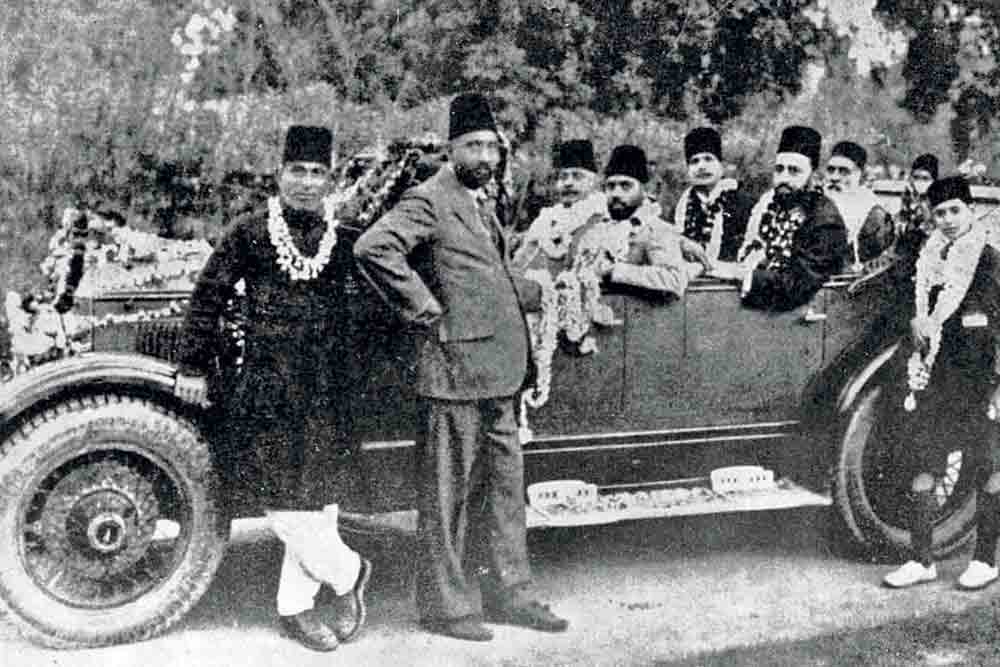
In the 1930 session of the Muslim League, Iqbal had spoken of a consolidated Muslim state in the Northwest of India—comprising Punjab, Sindh, NWFP, and Baluchistan—as being ‘the final destiny of the Muslim, at least of NW India’
There is, of course, much discussion about the reasons for the change. This was a polarising period in India following the partition of Bengal in 1905. The British would henceforth see a Hindu-Muslim divergence as an essential bulwark of their rule. There was an international context, too, with a growing sympathy amongst Muslim intellectuals for the increasingly embattled Ottomans—the last of the great Islamic dynasties with the decline of the Safavids in Persia and the Mughals in India. There are other reasons too, but what is striking for our purpose is how Iqbal repurposed himself from this time.
AMBASSADOR OF UNITY TO QUAID-E-AZAM
Iqbal’s transformation was in the realm of poetry although in time he would become an icon and flag-bearer for the protagonists of Pakistan. This dual role continues. On his death in April 1938, he was buried within the Badshahi mosque in Lahore and his grave is a place of pilgrimage for Urdu lovers cutting across national boundaries as equally for Pakistani nationalists of a whole range of hues.
A similar transformation from composite to Muslim nationalism is better known—that of the case of Muhammad Ali Jinnah, but here the change was not so much in the realm of poetic fancy or imagination but in that of real-life politics. As is well known, in the first two decades of the 20th century Jinnah stood out as a protagonist of Indian nationalism. We get a sense of his stature towards the end of the 1920s from a brief essay by Sarojini Naidu in which she quoted Gokhale that Jinnah would be the “best ambassador of Hindu Muslim unity”. His marriage to a Parsi ( in April 1918), his lifestyle, and a personality refreshingly free from any sectarian impulse made him appear to Naidu as someone who “stood approved and confirmed by his countrymen not merely as an ambassador, but as an embodied symbol of the Hindu Muslim Unity”. Naidu’s ambitions for Jinnah were however higher: that he “may in some glorious and terrible crisis of our national struggle pass into immortality as the Mazzini of the Indian Liberation”.
Events or rather history took a different trajectory and the path for Jinnah would become that of being the most prominent face of Muslim separatism. When and how this break took place has long enthralled historians. There are many different explanations. Some trace this new trajectory to the Nagpur session of the Indian National Congress, which was in many ways also the point when a seismic shift took place in Indian political culture with the Gandhian tactics of non-cooperation and mass civil disobedience and the launch of the non-cooperation and Khilafat movements. Jinnah’s moderation and preference for gradual change found itself out of sync with this new spirit.
In Nagpur, Jinnah was isolated and he was to be shouted down and booed by the audience. The 1920 Congress session may well be the point when Jinnah started moving in the opposite direction—for both political as well as ideological reasons. Tactically outmanoeuvred in Congress he also saw no grounds for being in the same camp as the mainstream Khilafat supporters—in the main the traditionalist Islamic clergy and the conservative sections of the community.
There were subsequent points of divergence—too many to go into—here. The point is that the break in Jinnah’s political and intellectual trajectory is evident and this divergence would continue to gather traction, ending finally in a bloody and violent Partition at the same time as the subcontinent moved to sovereignty. Jinnah’s responsibility in this cannot be minimised and, in fact, symbolises the extent of the break between the young and the older Jinnah. He would never be the Indian Mazzini that Sarojini Naidu had predicted but Jinnah was perhaps also the closest the Muslims of South Asia ever got to having a Kemal Atatürk, but that also was not to be.
THE ENIGMATIC LOKMANYA
The trajectories of Savarkar, Iqbal and Jinnah are all in one direction. Each went from invoking and imagining a composite Indian nation of multiple faiths to a platform of religious exclusivism and even supremacy of their particular faith. But history is rarely a linear process and the case of ‘Lokmanya’ Bal Gangadhar Tilak encapsulates an opposite vector.
Tilak stands out in the early phase of Indian nationalism for three main reasons. First, at a time when most nationalists trod carefully when critiquing the colonial state and making demands for change, Tilak’s stridency and candour gave his politics a different optical quality. In the standard trope of the Indian freedom struggle he is categorised therefore as the leader amongst the ‘Extremists’ at a time when moderation was the default mode of most nationalists. Secondly, when social reform of Indian society, especially issues of status of women and caste were a kind of clarion call for most public figures, Tilak was decidedly a conservative. In many celebrated reform cases of the late-19th and early 20th centuries, Tilak ranged himself against the reformists and on the side of the orthodoxy. To him the reform project was a colonial trap to erode indigenous self-esteem and reform—admittedly often necessarily—had to come from within and from below rather than be enforced as a fiat of the colonial state.
Thirdly, and finally, the Lokmanya was not a debating-room politician but one who believed in bringing people out on the streets. By improvising on an existing Ganapati festival and creating a Shivaji festival, he created two platforms for mobilising Hindus. These were not anti-colonial in their thrust per se, but Tilak nevertheless was a source of deep anxiety to the colonial state—he was continuously in its crosshairs. This mobilisation was moreover not tactical or an act of political expediency. In the words of a recent biographer, “it was an article of faith”. Thus, Vaibhav Purandare points out: “Tilak saw in Hinduism and the idea of Hinduising politics the moorings for a growing Indian nationalist consciousness”.
In the standard trope of the Indian freedom struggle Tilak is categorised as the leader amongst the ‘Extremists’ at a time when moderation was the default mode of most nationalists. In many celebrated reform cases of the late-19th and early 20th centuries, Tilak ranged himself against the reformists and on the side of orthodoxy
All this put together is a trajectory that would have well and truly established Tilak as the original Hindutva icon and template. However, we encounter an uncharacteristic break in 1916. He had been released in mid-1914 after a long spell in jail and transportation to Mandalay in Burma. Healing the Congress rift between moderates and extremists was now one of his priorities. Even more uncharacteristic was the priority he accorded to a joint Hindu-Muslim platform. The Congress session of 1916 in Lucknow achieved these goals. Congress came together but, even more significantly, the Muslim League and the unified Congress reached an agreement on separate electorates for Muslims and that in provinces where Muslims were in a minority the seats reserved for them would be in excess of their proportion of the population. To his supporters this may well have appeared as heresy, but such was Tilak’s stature and the force of his personality that he convinced all to rally behind this agreement. His main ally in this incidentally was Jinnah and the title of ’Ambassador of Hindu-Muslim Unity’ was bestowed by Sarojini Naidu on the future Quaid–e-Azam of Pakistan after this landmark event.
Congress agreeing to separate electorates for Muslims at Tilak’s behest is one of those enigmatic and intriguing moments in modern Indian history whose possibilities were endless but never realised. But the Lokmanya’s leadership of this initiative is a prime example of how even well-established political trajectories can change.
IT IS PART OF THE TRAVESTIES OF our times that current polarities mean that we view past figures monochromatically. Their intellectual evolution gets simplified to the extent that uncharacteristic changes and positions are ironed out. In the process, agency, the capacity by which they made choices, gets eroded and diluted in the historical record.
To return where I began, to EP Thompson, the thrust of his historical work was to recover agency in the working classes—the latter could also be more of a metaphor than a definitional term for those whose presence in the historical record is otherwise thin. From Thompson’s works a whole generation of historians were tutored into understanding how he recovered agency form the oddest of places and situations—the whispered conversation in a pub, the quiet hymn in a chapel, etc.
I could never understand enough of Althusser to be sure but I would like to think that he too was addressing questions of agency and an epistemological break may well also be recognition of that ability to choose to think and act differently.
Tilak, Iqbal, Savarkar and Jinnah all made a radical departure from their earlier stated positions. Do these qualify as ‘epistemological’ breaks? I am not sure whether ‘Althusserian’ purists, if indeed there are any still left, would agree with such a classification. However, the concept is useful even if it is used in a minimal and very general sense—it is useful to reflect that even a single life can take massive shifts and turns. For better or for worse, all four of these individuals made choices and changed an existing trajectory to their lives. The legacy of that change extends well into ours.

/wp-content/uploads/2025/01/Cover_Kumbh.jpg)







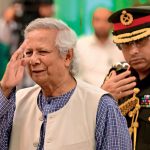
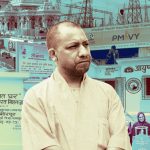
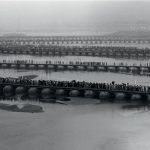
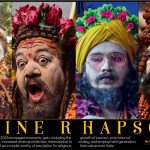

More Columns
What does the launch of a new political party with radical background mean for Punjab? Rahul Pandita
5 Proven Tips To Manage Pre-Diabetes Naturally Dr. Kriti Soni
Keeping Bangladesh at Bay Siddharth Singh